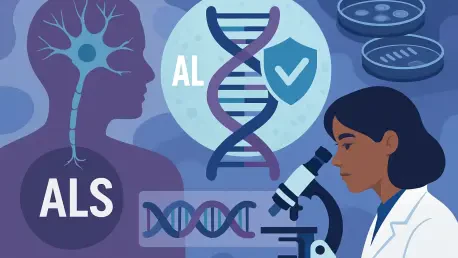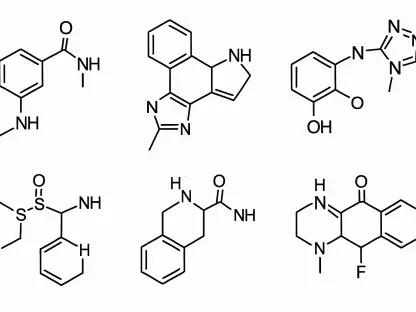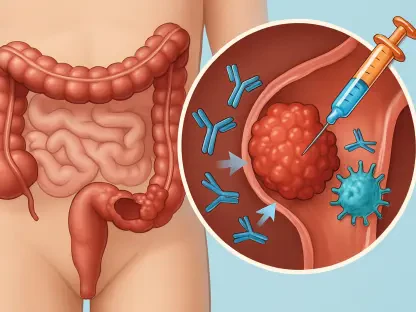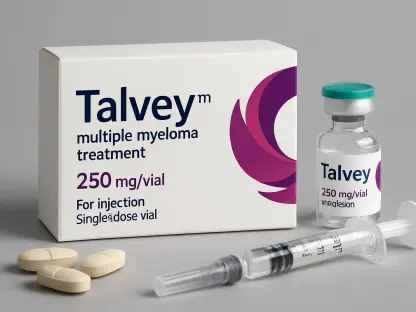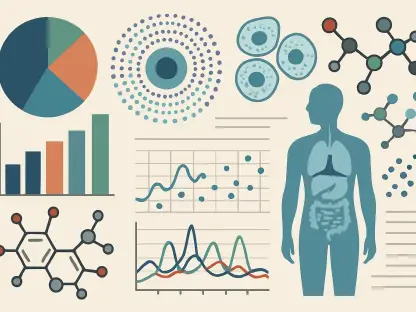Amyotrophic lateral sclerosis (ALS), a devastating neurodegenerative disease that relentlessly attacks motor neurons responsible for muscle movement, has long puzzled scientists and clinicians with its rapid progression and fatal outcomes. A recent study, conducted by a collaborative team from Stockholm University, the Paris Brain Institute, and Örebro University, has unveiled remarkable insights into why certain motor neurons resist the ravages of ALS while others succumb. Published in a leading scientific journal, this research zeros in on a hereditary form of ALS linked to mutations in the SOD1 gene. By exploring the molecular differences between vulnerable and resistant neurons, the findings offer a glimmer of hope for developing novel therapeutic strategies. This breakthrough not only deepens the understanding of ALS pathology but also highlights the potential for targeted interventions that could slow or even halt the disease’s progression in the future.
Unraveling the Resilience of Motor Neurons
The core of this pioneering research lies in the striking contrast between motor neurons that withstand ALS and those that deteriorate under its assault. Specifically, the study revealed that motor neurons controlling eye muscles exhibit extraordinary resistance to degeneration. This resilience is largely due to naturally high levels of protective factors such as Engrailed-1 (En1), a transcription factor crucial for regulating protein production, alongside Parvalbumin (Pvalb), Cd63, and Galanin (Gal). These elements appear to form a biological shield, safeguarding these neurons from the destructive effects of ALS. Such a discovery was unexpected, as it suggests that certain neuron groups are inherently equipped with defenses that others lack. This finding opens a critical window into understanding how natural protective mechanisms might be harnessed to protect more vulnerable cells from the disease’s impact, potentially guiding future research toward mimicking these defenses in therapeutic applications.
In stark contrast, motor neurons that are susceptible to ALS display a dual response that ultimately fails to save them. While these neurons attempt to activate protective genes like En1 and Pvalb, and even strive to regenerate lost muscle connections through genes such as Atf3 and Sprr1a, their efforts fall short. The harmful responses triggered by ALS overpower these defensive mechanisms, leading to neuron death and the subsequent disconnection from muscles. This tragic outcome underscores a critical gap in the biological arsenal of vulnerable neurons compared to their resistant counterparts. The research highlights the complexity of ALS, where the balance between protective and destructive forces determines a neuron’s fate. Understanding this delicate interplay could be key to designing interventions that bolster the protective responses while suppressing the harmful ones, offering a lifeline to those affected by this relentless condition.
Advanced Techniques Driving Genetic Discoveries
To uncover these insights, the research team employed cutting-edge methodologies that allowed for an unprecedented look into the genetic activity during ALS progression. By analyzing millions of messenger RNA (mRNA) molecules, scientists tracked how gene expression changes as the disease advances. This detailed approach revealed distinct patterns that differentiate resistant neurons from those at risk. Additionally, the integration of machine learning, a powerful tool in artificial intelligence, helped identify key genetic markers of ALS. Genes such as VGF, INA, and PENK emerged as reliable predictors of the disease across various SOD1 mutations. Validated in human samples, these genes hold promise as biomarkers for diagnosing ALS and monitoring its trajectory. Such advancements signify a major leap forward, as they provide clinicians with potential tools to detect ALS earlier and tailor treatments more effectively to individual patients.
Beyond identifying biomarkers, the application of these sophisticated techniques has illuminated broader implications for ALS research. The ability to map gene activity with such precision offers a roadmap for pinpointing other molecular targets that could influence disease outcomes. Machine learning, in particular, has proven invaluable in sifting through vast datasets to uncover patterns that might otherwise remain hidden. This analytical power not only enhances the understanding of genetic underpinnings but also accelerates the pace at which discoveries can be translated into clinical applications. As these technologies continue to evolve, they are expected to play an increasingly central role in unraveling the complexities of neurodegenerative diseases like ALS. The synergy of genetic analysis and computational tools marks a new era in medical research, one where data-driven insights could lead to breakthroughs that transform patient care over the coming years.
Paving the Way for Future Therapies
The implications of this research extend far beyond academic curiosity, pointing directly toward actionable therapeutic possibilities. Lead researcher Eva Hedlund, a professor of neurochemistry at Stockholm University, emphasized that stimulating protective responses in vulnerable neurons while curbing harmful ones could yield significant benefits in treatment development. By focusing on the genetic differences between resistant and vulnerable neurons, scientists can begin to design interventions that replicate the natural defenses found in resistant cells. This approach holds the potential to slow disease progression, offering patients a chance at improved quality of life. The identification of unique gene activity patterns in vulnerable neurons further supports the feasibility of targeted therapies, which could be customized to address specific molecular weaknesses in affected individuals.
Looking back, the collaborative effort behind this study demonstrated a remarkable commitment to advancing ALS research through innovative methods and interdisciplinary expertise. The detailed mapping of molecular mechanisms, combined with the discovery of potential biomarkers, laid a solid foundation for future explorations. As the scientific community reflected on these findings, the focus shifted toward translating this knowledge into practical solutions. Continued investment in genetic research and technology was deemed essential to build on this momentum. The hope was that, with sustained effort, the insights gained could lead to therapies that not only manage symptoms but also alter the course of ALS. Encouraging further studies to refine these protective strategies and validate biomarkers in larger populations became a priority, ensuring that the progress achieved would benefit patients facing this challenging disease.
